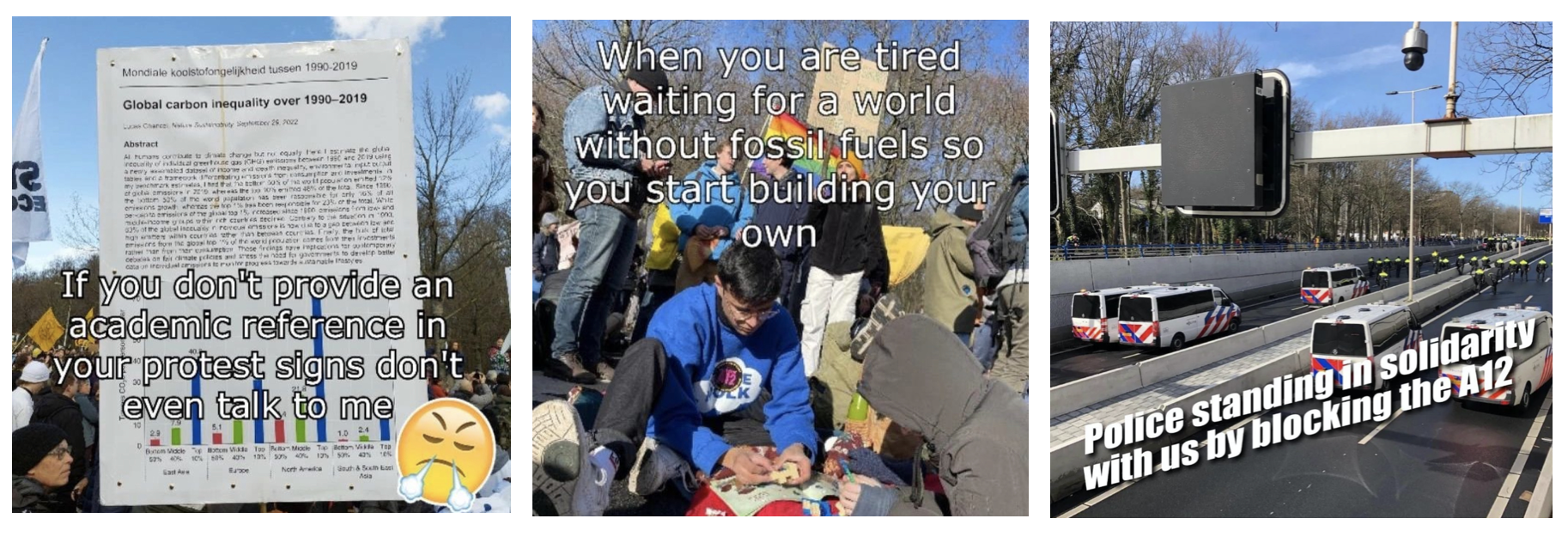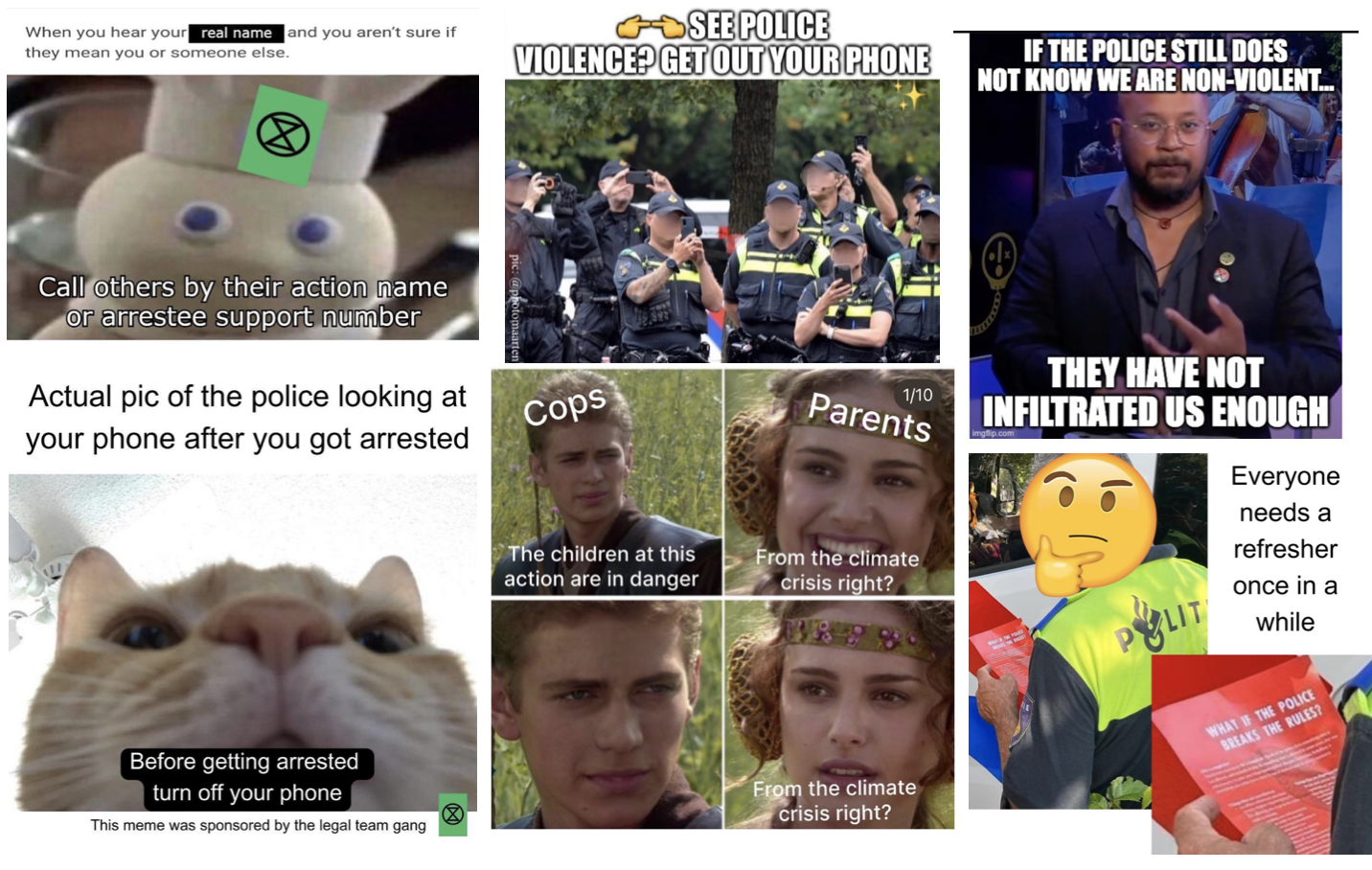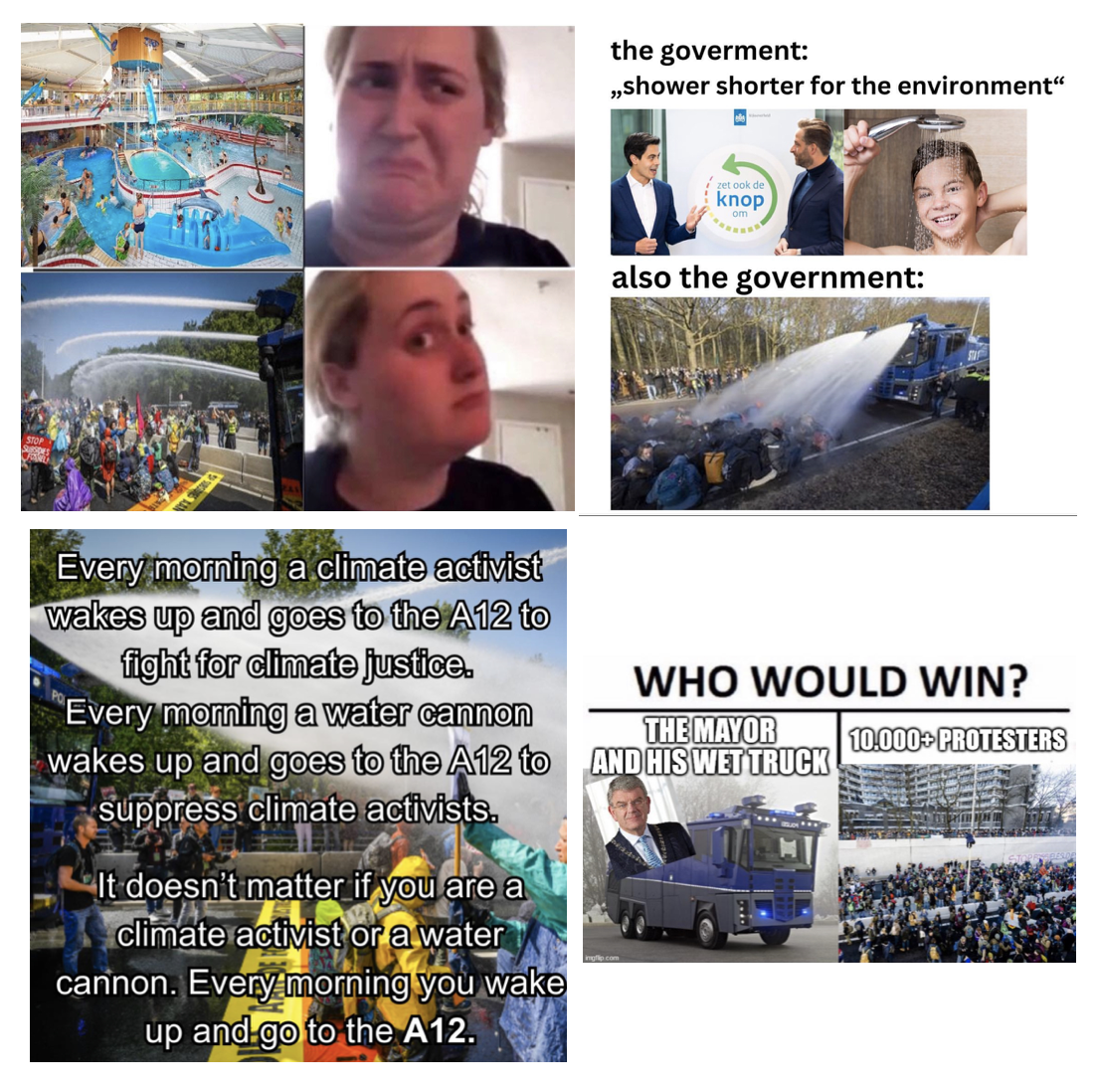Since their first occupation of the A12 highway in The Hague, Extinction Rebellion has been reporting live on their actions through memes. Yes, you read that right, memes. The climate activists even organized a meme workshop during one of their membership meetings in September. Whether you think that the civil disobedience organization that peacefully protests against the subsidies that the government invests in the fossil industry is desperately needed (I really hope you do, to be honest); that their methods are appropriate or not (too disruptive or not disruptive enough); that it is a white organization and is failing to address (criticism on) their privilege in relation to police violence and intersectional (climate) justice; or whether the police report to Veilig Thuis, the Dutch reporting center for child abuse, against the parents who took their children to the protest is justified or not (Veilig Thuis does not think so and neither do I) – it is evident that almost all Dutch media discuss the XR protests.
It is not surprising that XR uses memes to spread their own narrative. According to ex-mame maker and activist Anahita Negabat, memes can be used as a bottom-up tool for rejecting the logic of top-down knowledge production that is often carried out by hegemonic established media and political institutions. In addition, memes have a dialectical effect. Geert Lovink and Marc Tuters write that memes are cultural negotiations that take place in the flow of everyday language, through Walter Benjamin’s metaphors of awakening and transformation. Memes therefore have an emancipatory character – after all, anyone connected to the Internet can create and distribute memes and they are more accessible than most scientific articles – and can change users’ ideological ideas. I would say this is all very relevant for organizations that challenge the established order in the interest of the future of the earth and humanity.
Meme Rebellion
Extinction Rebellion has been posting their memes on Instagram account @meme___rebellion (which the launch of the second Critical Meme Reader helped inspire, the admins tell me #humblebrag #talkingaboutfullcircle). The core team behind the account consists of three people and there are about ten frequent contributors. “Part of our core principle is that everyone has unique experiences and knowledge and that memes are an easy and quick vehicle to share these. We publish all memes that adhere to the XR principles that are sent in because humor is too subjective to judge. In this way, we create a selection of images that reflect our diverse community.”
Why are they doing this? “One, because it is fun. Activism is a serious matter, yes. But you can have a bit of fun with it. Actually, you must have some fun with it, especially when dealing with the climate crisis, otherwise, you burn out quite rapidly. Two, because it is therapeutic: it is a way to release frustration about the climate crisis by creating something and putting it out there. That’s why we give workshops – so more people can share their experiences. Meme-making, even in its most basic form, is akin to art. It is, in other words, a channel for individual expression that lets you quickly connect with people.”
They also tell me that memes as a tactic are currently under-explored yet could be pivotal to XR’s objectives. On one hand, they use memes to connect with new people who are sympathetic to their cause. “By meming the activist experience we also hope to make it more concrete and attractive to people who are interested in it but where it might feel too distant or scary for them to join.” On the other, they reinforce in-group connections with inside jokes. “Memes should make you feel less alone.”
A collective memory to look back
Let’s have a look at some of these memes then shall we?

Fig 1.1 – 1.3: A selection of memes that were made and shared live during the first protest, relating a protest sign, a feeling of togetherness while occupying and a little joke about the police supposedly helping the protesters block the A12 highway instead of removing the protestors. The admins share that they get the most shares from their live memes because it allows people to share their own experiences. According to them, a poster or infographic, just does not have that same effect.

Fig 2.1 – 2.3: A selection of memes where XR addresses their own position towards (Dutch) media outlets, journalists and social media platforms.

Fig 3.1 – 3.3: A selection of memes where the excitement, social interaction and coziness (I mean there’s a cat) which can be present in anticipation, during and after a protest. The inside-jokes Meme Rebellion mentioned, as these are only funny for those who have experienced protesting with XR.

Fig 4.1 – 4.6: A selection of memes addressing the role of the police and exposing some of their inconsistencies when dealing with protesters and some legal tips for protesters.

Fig 5.1 – 5.4: A selection of memes addressing the infamous water canons from Germany that are used to intimidate protesters.
Together, these memes capture the many specific situations, tensions, hypocrisy, commentaries, feelings and experiences around the protests from XR’s point of view. In this way, the meme becomes a vehicle of a collective memory. Perhaps it is not the hard facts, such as on this Wiki, that are being preserved, but it is the affects around a moment in time that are saved.
An intervention to look forward
The political power of memes lies in their ability to capture and preserve the affects of a past, but also in their potential to be used proactively to look forward. When used as a speculative design intervention, they can be used to create new ideas for a just society. As iconic future expert Peter Schwartz might have concluded if he had applied his method to memes; memes can bring humanity’s unspoken assumptions about the future to the surface. Memes can be powerful interventions in challenging our “mental models” about the world, potentially lifting our “blinders” that limit our creativity and ingenuity. They allow us to anticipate difficult times and show us opportunities that would otherwise have remained invisible.
The best speculative designs suggest possible interactions between people, according to Anthony Dunne and Fiona Raby who wrote Speculative Everything. They argue that leftist people generally have relied too much on reason and have ignored the possibility of fantasy. In that context, memes are a source of inspiration, a starting point for a conversation about change. About revolution. Our (climate crisis) reality may be extremely bleak, but there is still time for damage control if we act now.
I’ve cited Savriël Dillingh before and I’ll do it again. There’s no way to stop me. He states that true hope can only be directed forward. ‘That is to say, it looks at something that is undoubtedly good and beautiful, but necessarily something that we cannot yet understand. We know it’s there, but we simply don’t have the conceptual language to express it yet.’ Fortunately, we have memes, because, according to Dillingh, they allow us to mass-produce hope. And hope is only relevant if it is connected to something concrete, as Geert Lovink recently shared in one of our conversations; hope must be embedded in protest movements for it not to be naive. Like the movement of XR for example, who are showing us that memes can be portals to both the past and future.
And Joke Hermes and I have coincidentally invited market philosopher, business ethicist and political meme maker Savriël Dillingh (some know him as @gratis_saaf_voor_iedereen) to Society 5.0 Festival on the 31st of October to talk about memes, participation and hope. So I hope (see what I did there) to see you there. Or on the A12 (if you are able to) – that would be even better.


